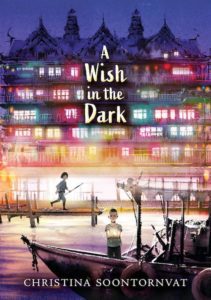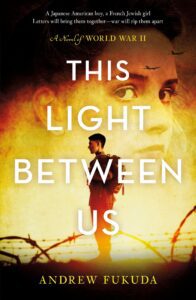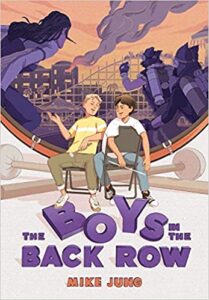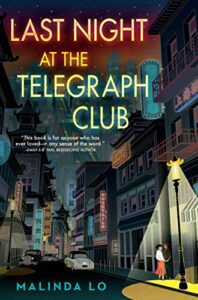How to Stop Anti-AAPI Hate
Last night we heard news of yet another mass shooting, this time a radicalized young white male targeting Asian-American women. So far, eight people have died from this Atlanta-area attack and the shooter is in custody, having been apprehended on his way to Florida to commit more acts of violence. Unfortunately, early police statements have tended to paint the shooter as a victim of his addictions, making this all about him rather than about eight people who went to their jobs and never came home because they were targets of his hate and violence.

This sidewalk chalk in Manhattan predated the Atlanta shootings but is relevant. There have been several attacks against Asian Americans in New York City recently.
Since last March, when the World Health Organization declared Covid-19 a global pandemic, there have been 3,795 hate crimes against Asian Americans and Pacific Islanders. The organization Stop AAPI Hate reports that the former president’s scapegoating of China and people of Chinese heritage has led to this increase. The words of a political leader have real-world consequences.
Over the weekend I watched the five-hour BBC documentary “The Death of Yugoslavia” as preliminary research for a project I’m considering. Along with the feature film “Quo Vadis, Aida?” — recently nominated for an Academy Award in the International Film category — it paints a picture of nationalism leading to the mass murder of the Other. Repeated over the course of years, Slobodan Milošević’s words led his massive number of supporters to commit genocide. His logic seemed both absurd and plausible, that fatal combination that propels religious fanatics, extreme nationalists, and believers in conspiracy theories like QAnon.
 In the United States, this is not the first time a believer in absurdities has committed atrocities. Although the leader is no longer in power and major online platforms have banned him, he continues to give press conferences as if he still were the president — and his supporters believe he is still the president, denied his rightful place because of a stolen election (with no proof given). He and his supporters continue to dominate extremist platforms, and he retains a significant number of mouthpieces in both houses of Congress.
In the United States, this is not the first time a believer in absurdities has committed atrocities. Although the leader is no longer in power and major online platforms have banned him, he continues to give press conferences as if he still were the president — and his supporters believe he is still the president, denied his rightful place because of a stolen election (with no proof given). He and his supporters continue to dominate extremist platforms, and he retains a significant number of mouthpieces in both houses of Congress.
This is not the time for us to stand down and let our new President Biden and his administration take care of things, the way we did under President Obama. All of us have roles to play in stopping hate against Asian Americans and Pacific Islanders. My friend Edi Campbell has a list of things we can do, including shopping at businesses owned by AAPI entrepreneurs, getting involved with local organizations, and reading about AAPI history. And, of course, speaking up. And PEN America has linked to a public statement from the Asian-American Writers Workshop.
 Several years ago, I reported on a panel of Asian-American authors. They are far from the only AAPI authors out there, and in 2020, I read a number of outstanding books for children and teens from authors who weren’t on that panel. These are good books to give to the young people in your life — and read with them — so that they grow up with a better understanding of the many peoples, cultures, and life experiences that make up this group. Armed with this knowledge, they will be better able to resist the stereotypes perpetuated by racist demagogues looking to enhance their own power at the expense of our neighbors.
Several years ago, I reported on a panel of Asian-American authors. They are far from the only AAPI authors out there, and in 2020, I read a number of outstanding books for children and teens from authors who weren’t on that panel. These are good books to give to the young people in your life — and read with them — so that they grow up with a better understanding of the many peoples, cultures, and life experiences that make up this group. Armed with this knowledge, they will be better able to resist the stereotypes perpetuated by racist demagogues looking to enhance their own power at the expense of our neighbors.
This is the list of books that I read and appreciated, with brief annotations. All of these books were published in 2020, except one 2021 book hot off the presses:
 For middle graders (Grs. 4-8):
For middle graders (Grs. 4-8):
Higuera, Donna Barba, Lupe Wong Won’t Dance. Levine Querido, 2020.
Half-Chinese American, half-Mexican American Lupe wants to play baseball rather than square dance for PE class, but being forced to take a class she doesn’t want leads to unexpected friendships.
Jung, Mike, The Boys in the Back Row. Levine Querido, 2020.
A story of middle school friendship and facing challenges from bullying to the Korean-American protagonist’s best friend moving at the end of the school year, as the friends plot to attend a comic convention during a marching band field trip.
Soontornvat, Christina, A Wish in the Dark. Candlewick, 2020.
Thai/Les Miserables-inspired fantasy of an orphan who escapes the prison where he was born and the privileged girl who joins him in overthrowing an oppressive regime.
Fukuda, Andrew, This Light Between Us. Tor, 2020.
A Japanese-American teenager interned during the Second World War joins the US Army to get his father out of prison and find an old pen pal from Paris, a Jewish girl who has disappeared during the war.
Gregorio, I.W., This Is My Brain in Love. Little, Brown, 2020.
Budding romance between a Taiwanese American girl whose family restaurant is failing and her biracial classmate who thinks he can save it, as the two confront family prejudices and anxiety.
 Lo, Malinda, Last Night at the Telegraph Club. Dutton, 2021.
Lo, Malinda, Last Night at the Telegraph Club. Dutton, 2021.
Two girls — one Chinese-American and one white — fall in love in 1950s San Francisco and bond over their visits to see a male impersonator perform at an underground club.
Wen, Abigail Hing, Loveboat Taipei. Simon & Schuster, 2020.
Sent to a cultural program in Taiwan after being caught hugging a white boy, Ever discovers the lack of supervision and possibilities for romance and rebellion. Watch for Loveboat Reunion in January 2022.








Thank you, Lyn, for always having ready words and suggestions for action in the face of these horrors.
Thank you for reading. None of this would have happened if we’d had different leadership four years ago.